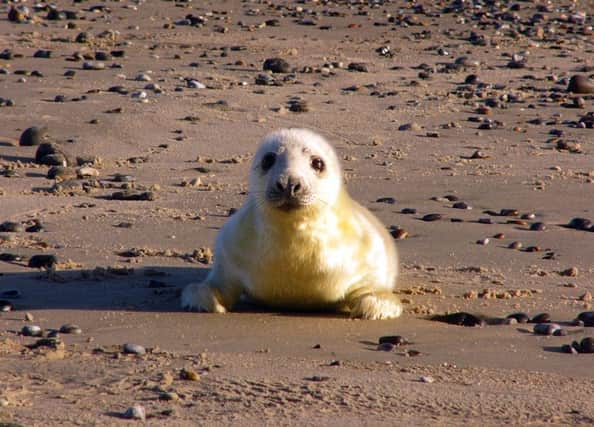Grey seal births hit record number in south-east Scotland
This article contains affiliate links. We may earn a small commission on items purchased through this article, but that does not affect our editorial judgement.


The number of grey seal pups born at St Abb’s in Berwickshire has risen by more than 10 per cent in the past year, according to a new survey.
Wildlife experts at the conservation charity National Trust for Scotland (NTS) have been observing seal pups each November for a number of years, but only started detailed monitoring of the numbers after local staff noticed in 2014 they were seemingly spreading along the coast.
Advertisement
Hide AdAdvertisement
Hide AdThe latest figures show the number of babies born on the main pupping beach increased from 556 in 2014 to 631 last year.
Total numbers of pups along this stretch of coast reached 927 in 2015.
The grey seal is the largest of two seal species found in UK waters, and is one of the rarest worldwide.
The UK is home to nearly half the global population of grey seals, with an estimated population of 110,000 to 170,000.
More than 90 per cent of these live north of the border, mainly around the Hebrides and Orkney.
The species is protected, though a special government licence permits the shooting of animals seen in the vicinity of fishing gear or fish farms.
Liza Cole, property manager at St Abb’s Head, said: “Scotland and the UK hold over 40 per cent of the world population of this species.
“It is good to see so many pups on our beaches as the grey seal is actually one of the world’s rarest.
Advertisement
Hide AdAdvertisement
Hide Ad“Grey seals are such a regular sight along our coasts, it is actually quite hard to appreciate this fact at times.”
“However, it is not clear what our counts mean for the grey seal population as a whole at this time as many seal pups won’t last their first year.”
Monitoring work will continue over the next few years to establish whether this recent population expansion is a one-off or part of a long-term trend.
Lindsay Mackinlay, nature conservation adviser, said: “The figures for seal pups are interesting and encouraging, and something we will keep an eye on in the foreseeable future.
“At this time, it appears that other grey seal colonies along the east coast of the UK have witnessed large numbers of seal pups being born in 2015, although we do not know for how long this trend will continue.
“I believe the Farne Islands colony saw similar increases to us but the seal pup counts at Blakeney Point in Norfolk remained stable in 2015 after several years of massive growth.”
Formed by a series of volcanic eruptions, the craggy landscape of St Abb’s Head is a national nature reserve famous for its clamouring seabirds, rugged coastline, rich grasslands and crystal-clear waters.
The promontory, with its towering offshore rock stacks, is a year-round haven for birdwatchers, walkers, and wildlife lovers, but is transformed into a ‘seabird city’ during the summer months.
Advertisement
Hide AdAdvertisement
Hide AdThe dramatic cliffs provide spectacular vantage points from which to watch thousands of nesting seabirds, including endangered guillemots, kittiwakes and razorbills.
But the conservationists are appealing to the public to keep their distance from the seal colony during pupping, as distressed mothers can abandon their young.
Anyone wanting to get a closer look can watch footage of the St Abb’s Head seals on the charity’s website.
Shot by NTS wildlife cameraman and video editor Simon Goodall, the film focuses on one pup’s struggle for survival.
Ms Cole added: “This video is the best way to see our seal population up close.
“Trying to access our beaches can be dangerous and would disturb the seal population, so we would encourage wildlife fans to view from the comfort of their own homes.”
The video can be viewed on the NTS Nature Channel